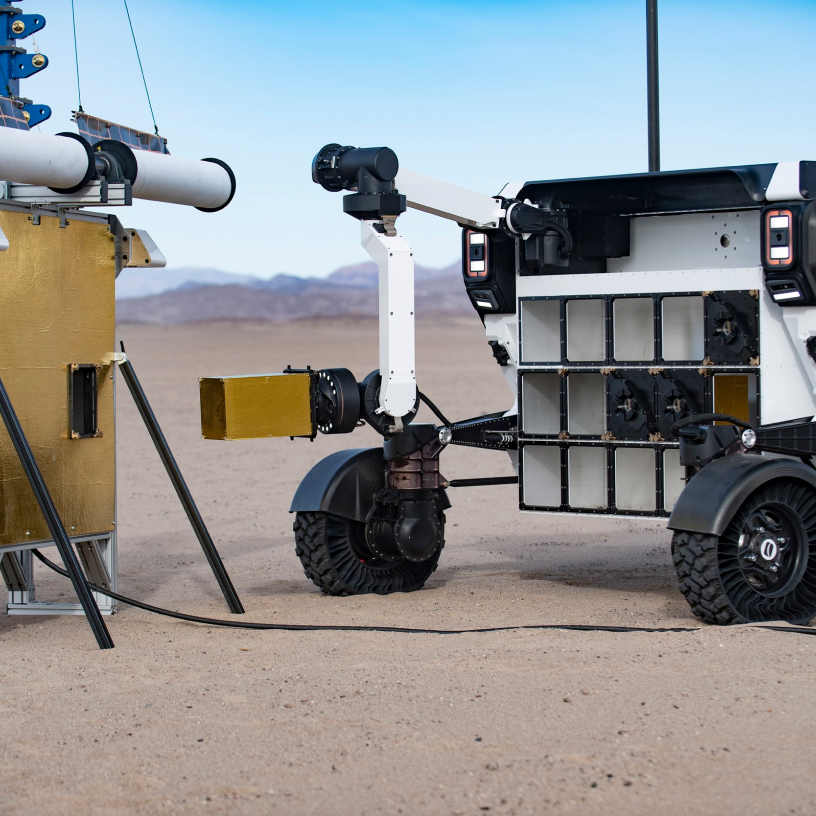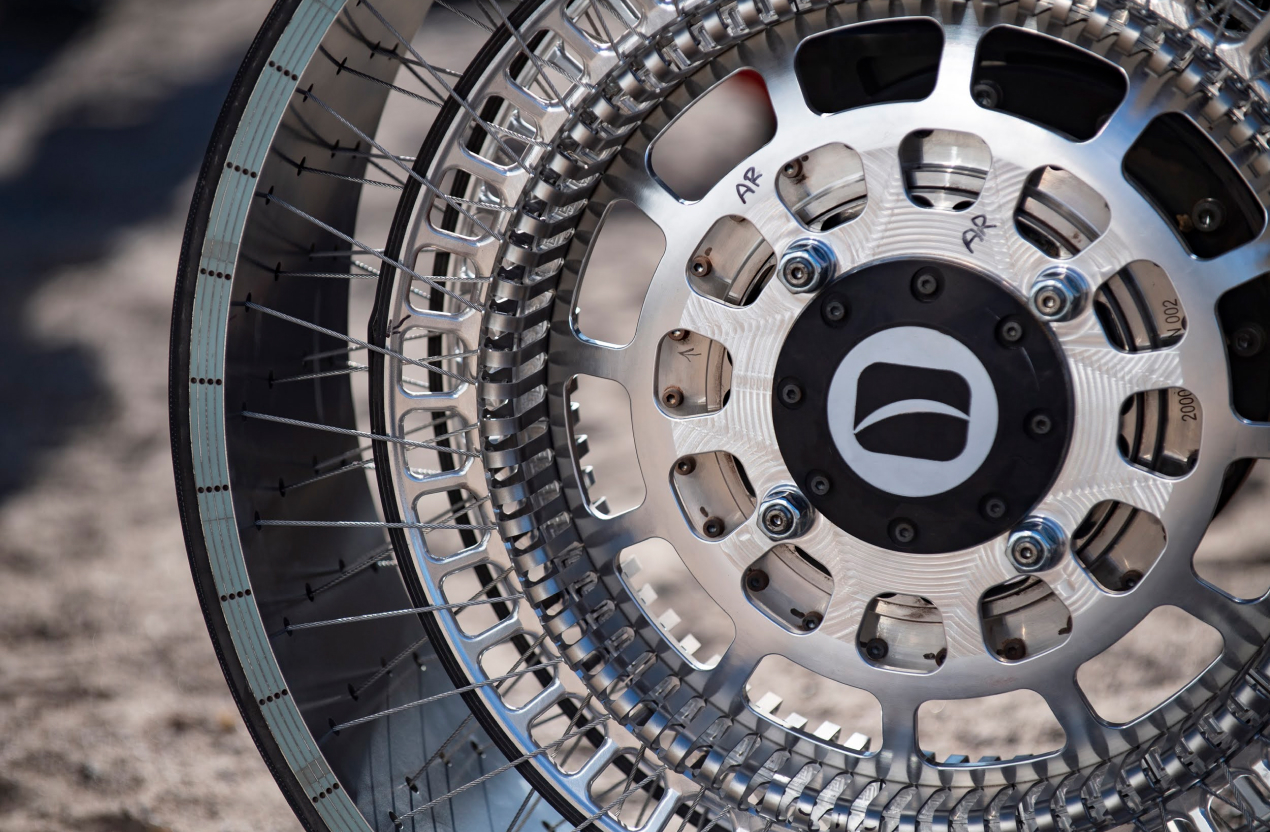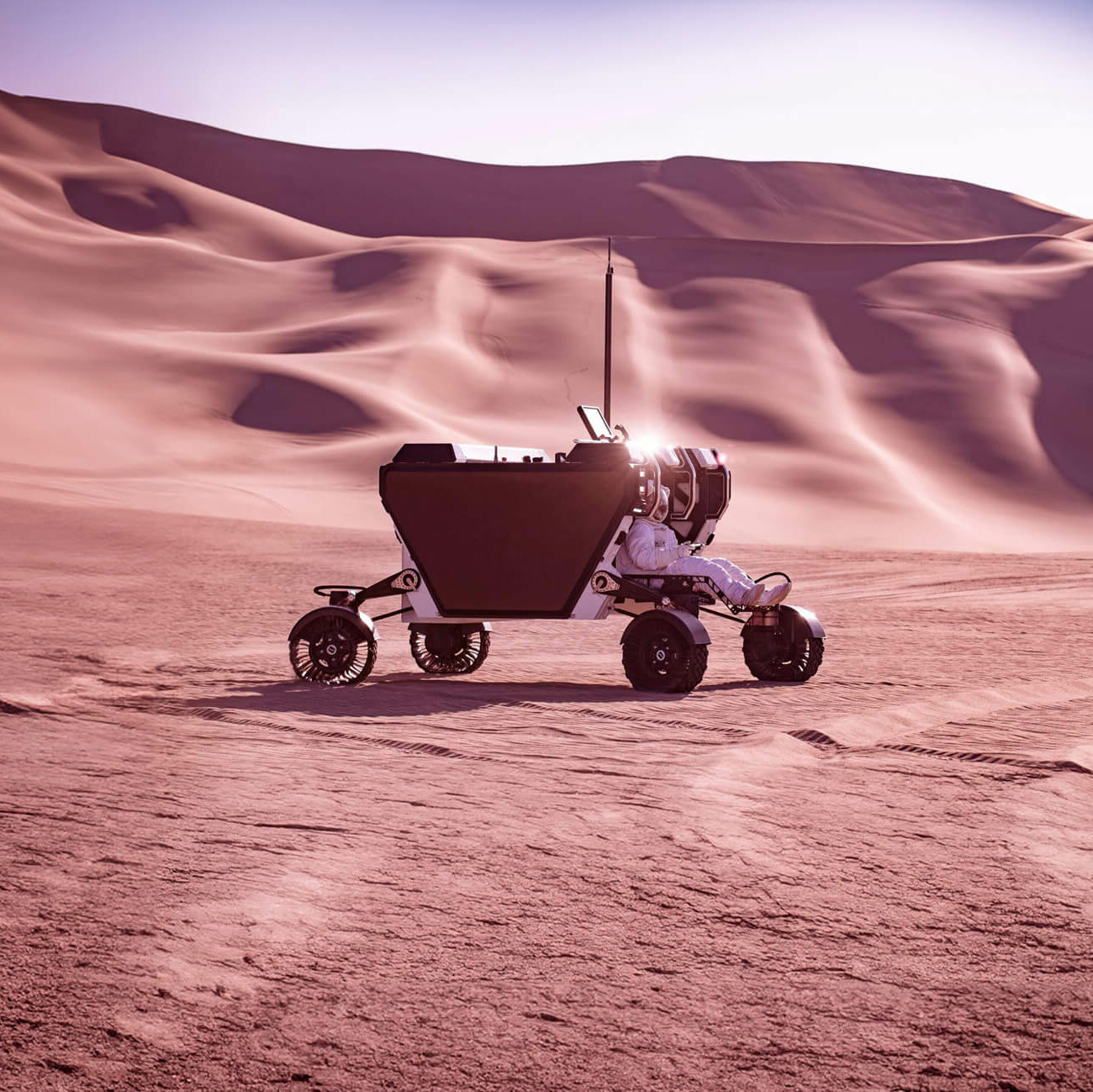Soon to be the largest
and most capable rover
to ever operate on
the Lunar surface.
“Enhanced mobility fundamentally changes one’s world. It changes where you can go. It changes what you can do. Quite simply, it changes what you can learn.”
For humanity to truly live and operate in a sustainable way off Earth, there needs to exist an efficient and economical transportation network all the way from the launch pad to the ultimate outpost.
There is currently a gap in the “last mile” of this transportation network, and FLEX is specifically designed to fill it.
We’ve developed FLEX Rover to support human operations, robotic science, exploration, logistics, construction, resource utilization, and other activities critical to enabling a sustained human presence on the Moon, Mars, and beyond.
The first fully commercial Lunar Terrain Vehicle.
Historically, planetary rovers have been bespoke and put into operation roughly once per decade. Custom-designed around a particular payload, traditional planetary rovers can cost billions of dollars to develop and qualify. This approach is no longer compatible with NASA’s goal of supporting a sustained presence on the Moon and Mars.

FLEX Rover solves this problem. To spur the development of a vibrant off-Earth economy, we’ve designed FLEX around a modular payload interface (FLEX Universal Payload) that supports transportation from lander to rover and back.

As required by NASA, FLEX Rover can carry two suited astronauts, accommodate a robotic arm to support science exploration, perform robotic cargo logistics, and survive the extreme temperatures at the Lunar South Pole. FLEX Rover can be operated remotely from Earth even when astronauts are not present, or operated by suited astronauts.

is the rover that will build the Lunar economy
Explore
Steerable High Gain Antenna
FLEX is equipped with a gimbaling antenna allowing it to maintain high-bandwidth communication with Earth.
Compliant wheels
FLEX’s flexible and robust wheels give the rover excellent mobility in soft soil.
Adaptive suspension
FLEX uses its articulating limbs to keep the chassis level in harsh terrain, absorb impacts while driving at high speeds, change its ground clearance, and pick up and deploy payloads.
Modular crew interfaces
FLEX’s removable standing crew interface allows larger payloads to be robotically transported during teleoperations from Earth, Lunar orbit, or an outpost.
Payload interfaces
In addition to the two top-deck payload interfaces used to attach modular elements like the crew interface & robotic arm, FLEX’s underslung payload interface can mobilize up to 3m³ of payload – including crew tools, instruments, and sample containers.
Navigation & Hazard Detection Sensors
FLEX is equipped with a suite of sensors for semi-autonomous operations. These allow it to independently align with and pick up payloads, and give it the ability to avoid dangerous obstacles.
Deployable solar array
FLEX’s four-wheel crab steering capability allows it to keep the 3m² panel array pointed towards the Sun while driving and its internal batteries topped up. This array can stow during highly dynamic operations to mitigate dust accumulation.
Robotic Arm
The six degree-of-freedom robotic arm allows FLEX to perform science and logistics activities in support of human operations or between human uses.
Light Bar
The Light Bar illuminates the path for Astronauts, contains stereo cameras allowing FLEX to see in 3D and creates additional space for three payloads.
Designed to deliver on the Moon and beyond

Massive Capacity
FLEX Rover will bring up to 1600kg and 3m³ of our customers’ cargo to the Lunar surface.

Unlimited Capability
FLEX Rover provides an array of services to our customers, including power, data, thermal management, and deployment with our robotic arm.

Unparalleled Mobility
FLEX Rover features a unique wheel-on-limb mobility system that raises and lowers the chassis ground clearance to adapt to Lunar or Martian terrain whilst maintaining stability.
This system enables FLEX Rover to lower attached instruments and equipment to the ground, or independently collect and deploy modular payloads.

Dependable Delivery
FLEX Rover features a dust-tolerant quick disconnect interface, including blind mate umbilicals that connect to a myriad of payloads. The umbilicals are used to supply payloads with regulated electrical power, data connections, and thermal management services as required.

Precise and Flexible
FLEX Rover features a six-degree-of-freedom (6DOF) robotic arm with payload capability exceeding 25kg (250N) within a 2m radius workspace. The robotic arm also includes a modular end effector with interfaces designed for a wide variety of use cases.
FLEX Rover uses its arm to deploy multiple smaller payloads, especially those that require precise placement or additional interaction in the form of mechanical or electrical power.

Safe and Smart
FLEX Rover uses a flexible architecture with significant flight heritage for its primary flight software.
Based on proven software used on a multitude of NASA missions, the system provides a portable, reusable, and modular solution to expedite spacecraft development. The architecture abstracts vehicle operations allowing customer payloads as much or as little control of the rover as necessary to support the payload objectives.

Powered by Innovation
FLEX Rover features Venturi’s unique hyper-deformable Lunar wheels. These wheels are engineered to be highly malleable while remaining long-lasting and robust. When FLEX Rover is deployed at the Lunar South Pole, traveling at speeds of up to 20 m/h, the four wheels supporting the two-tonne vehicle (payload included) are designed to warp to absorb ground irregularities and resist strong radiation from the South Pole.

Engineered for Extremes
FLEX Rover has a bespoke battery enclosure created by Venturi, that ensures consistent performance throughout the life of the LTVS on the Lunar surface. This battery enclosure needs to withstand the daily temperature variations of several hundred degrees (-90 to -230°C) that FLEX Rover will experience as it works on the Lunar South pole.

